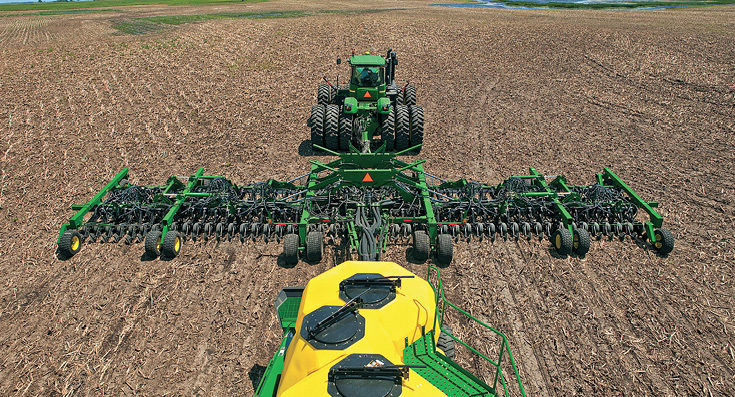No-Till Farmer
Get full access NOW to the most comprehensive, powerful and easy-to-use online resource for no-tillage practices. Just one good idea will pay for your subscription hundreds of times over.

Exactrix manufacturer Guy Swanson and farmers recently shared tips and observations that could help no-tillers achieve better seeding results with no-till air drills, including the John Deere 1890 air drill.
Find The Buffered Zone. Seeding deeper than recommended is producing better results with the Deere 1890. Seeds must be located in the ‘no-till buffered zone’ — an area often found 2 to 3 inches below the soil surface in no-till fields.
Organic life is most concentrated at the soil surface to a depth of about 1½ inches. This biologically active zone is well aerated and rich in organic materials and, thus, tends to be more acidic.
Oxidation creates acidic conditions, so fungus colonies are highly active in the aerobic zone.
Evenly distributed residue will help stabilize the soil temperature when night-time temperatures drop, and so the buffered zone has a more stable soil temperature.
Additionally, the buffered zone is not ideal for weed germination, since those seeds respond to infrared light and germinate primarily in the shallow aerobic zone of the surface residue to 2 inches in depth.
This zone normally has more uniform moisture distribution and temperature, which leads to more even germination. Seeds in the buffered zone will germinate more evenly than those in air-dry soil.
The goal is to have the entire crop emerge at the same time, without the stress of air-dry soil drying out the germinated seed.
Monitor Seeding Depth. Even though university-recommended seeding depth may be equal to the length of the wheat-berry coleoptiles…